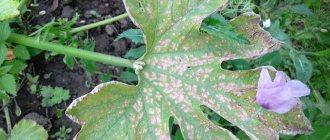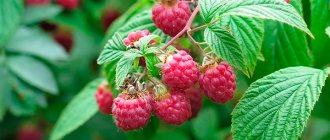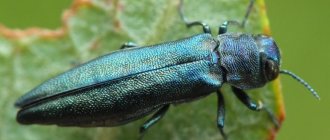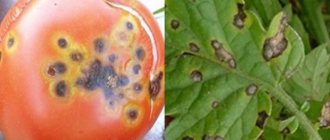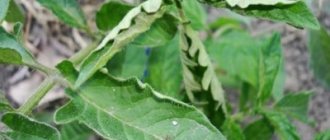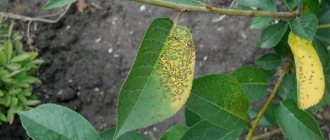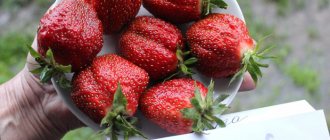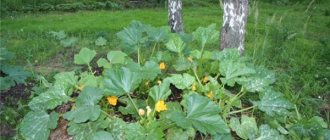The berry bushes we love have many enemies. At all stages of the growing season, plants can be overcome by a dangerous disease. We will tell you how not to be left without a harvest and how to treat currants and gooseberries against diseases.
Throughout the entire summer season, it is necessary to inspect the plants in the garden in order to detect warning signs in time. Black currants (as well as red, white, pink) are subject to the same misfortunes as gooseberries, so pest and disease control for both crops is similar.
Spheroteka (American powdery mildew)
The causative agent is fungi of the genus Sphaerotheca. The first signs of infection of currants and gooseberries with Spheroteka are noticeable already in May: the leaves, stems of the bush, and subsequently the fruits become covered with a white coating (later the color turns brown). Then the berries become smaller and lose their sweetness, diseased bushes do not have time to grow and die. The development of the disease is facilitated by high air humidity and dry, nitrogen-rich soil.
Control measures
The affected parts of the plant must be immediately cut out and burned, and the bushes themselves must be treated with a fungicide (Topaz, etc.). To prevent spheroteca in the fall, it is necessary to remove fallen leaves and thin out bushes. Dusting with wood ash and using the modern biofungicide Ampelomycin are also effective. Spraying is carried out with a 0.5% suspension 3-5 times per season with an interval of 7-10 days.
Septoria (white spot)
The causative agent is fungi of the genus Septoria. As with other fungal diseases, the most suitable conditions for the development of white spotting are high humidity, insufficient light, and dense plantings. Brown spots (2-3 mm in diameter) appear on currant and gooseberry leaves, which by mid-summer lighten in the center and turn brown at the edges.
Control measures
Infected leaves and shoots must be removed, then treated with 1% Bordeaux mixture. For prevention, you need to annually prune the bushes, dig up the rows, and remove fallen leaves from the area in the fall. If signs of the disease are detected, it is necessary to spray the bushes with Alirin-B solution (2 tablets per 1 liter of water) with the addition of liquid soap (1 ml per 1 liter of water). Treatments are carried out 3-5 times every 7-10 days.
Black currant diseases
Currant diseases of fungal origin often develop during prolonged rains and inclement weather. If the summer turns out to be cool and rainy, then the gardener should pay special attention to currant plantings. Viral diseases of black currant are more dangerous than fungal ones: they are more difficult to treat and prevent and can lead to the death of the entire bush.
Common fungal diseases
The most common fungal diseases affecting black currants are:
- anthracnose;
- septoria (white spotting);
- rust;
- powdery mildew.
Anthracnose is a disease that is common during rainy summers. Isolated yellow-green spots appear on the leaves, which then turn brown, grow and merge with each other, forming necrotic areas. After some time, the shoots and berries become sick.
If no measures are taken, the affected leaves, starting from the lower tiers, completely turn brown, dry out and fall off en masse ahead of schedule. Green berries fall off, shoots give weak growth. Affected bushes are less resistant to frost, and their productivity is reduced by 50–70%.
Black currant leaves in the initial stage of anthracnose damage
Septoria (white spot) is also most likely to occur in rainy, cool summers. Brown spots appear on the leaves, which over time become whitish with a brown border. With severe damage, the spots enlarge and merge with each other. The leaf dries up and dies. The yield of diseased bushes is reduced by 1.5–2 times.
Blackcurrant septoria leads to a 1.5–2-fold reduction in yield
Rust is red bumps on the back of leaves that merge into orange stripes as the disease spreads. Fruits may also be affected. Excessive spring watering can provoke the disease. Rust pathogens live on conifers or on a marshy plant - sedge. If there is a wetland or coniferous plantings near the garden plot, then for growing currants it would be better to choose varieties that are resistant to rust.
As the disease spreads, rust tubercles merge into stripes
Powdery mildew is a rare disease of black currant. It appears as a white coating on the tops of the shoots. Leaves do not grow, become deformed and die. If left untreated, it also spreads to berries.
Powdery mildew can spread to berries if left untreated.
Viral diseases
The most dangerous viral diseases of black currant:
- striped mosaic,
- terryness (reversion).
Striped mosaic is a dangerous disease in which you can completely lose your blackcurrant plantings. It appears as a yellowish pattern around the large veins of the leaves. Carriers are aphids, mites. Infection will occur if you graft a diseased cutting onto a healthy bush or trim healthy and affected bushes with the same undisinfected tool.
Striped mosaic appears as a yellow pattern on the leaves
Terry blossom is a disease in which black currants become sterile. The disease can only be detected when the bushes are flowering, although the leaves also undergo changes. They become more elongated, pointed, darker in color, and rougher. The teeth are fewer and larger, without a specific currant smell. Diseased shoots bloom a week later than healthy ones, the flowers acquire a dirty pink or purple hue, the inflorescences are elongated, crumble, and do not form fruits.
Black currant terry: a - infected shoot and modified flower; b - healthy shoot and flower; c - affected branch (photo)
Anthracnose
Another common fungal disease familiar to many gardeners. The first signs are small reddish spots (diameter 1 mm) on the leaves, which later begin to darken, swell and expand. The disease appears 1.5-2 months after the start of the growing season.
Gooseberries suffer from anthracnose much less often than currants.
Control measures
In early spring, treatment with 1% Bordeaux mixture will help (repeat after harvesting). Since the fungus overwinters in fallen leaves, in the fall it must be carefully raked out from under the bushes and burned. Also, Alirin-B solution (2 tablets per 1 liter of water) with the addition of liquid soap (1 ml per 1 liter of water) copes well with anthracnose. Treatments are carried out 3-5 times with an interval of 7-10 days.
Processing rules
Currant bushes are susceptible to fungal diseases. But you don’t need to know the signs of every pathology.
You just need to carry out preventive measures correctly and on time so that diseases avoid the bushes. Then the plants will be healthy and the harvest will be good.
Among the preventive measures for caring for shrubs, the most effective are:
- Regular spring pruning.
- Loosening, removing weeds in the tree trunk circle.
- Inspection of bushes on the site.
- Preventive treatment of bushes.
Each summer resident has his own treatment scheme, but the most tested and effective:
Spraying plants in early spring before buds open and in autumn after leaf fall with a 3% solution of Bordeaux mixture. For green leaves, the concentration decreases and a 1% solution is already used.
You can spray the currants on the leaves with a solution of potassium permanganate and iodine. Or use folk remedies. Such as tincture of wormwood, garlic, celandine.
A good preventative against fungal diseases is Fitosporin, Ridomil Gold.
Rules for processing plants:
- It is better to spray in the evening in calm weather;
- Not only the bush, but also the tree trunk circle must be treated;
- Processing deadlines must be observed. After all, strong chemicals can burn young foliage;
The solution consumption rate specified in the instructions for the drug must be strictly observed.
Rust
Currants and gooseberries are attacked by 2 types of this disease: goblet rust (yellow-orange “warts” form on the underside of the leaf) and columnar rust (reddish small spots on the leaves are characteristic). After some time, the berries and foliage of the diseased bush fall off.
Control measures
When the leaves just begin to bloom, the bushes are treated with a 1% solution of Bordeaux mixture (or other fungicides), then the treatment is repeated during the formation of buds. The final spraying is carried out after flowering. You can also use Alirin-B (2 tablets per 1 liter of water) with the addition of liquid soap (1 ml per 1 liter of water).
Why do yellow spots appear on currant leaves?
Stains can occur for various reasons.
Anthracnose
Usually on red currants, but sometimes on black currants, the leaves are affected by anthracnose. This is a fungal infection. Yellow spots first form on the plates, and then they begin to turn brown. The plates eventually become completely affected, dry out and fall off prematurely.
| On a note. The infection occurs when warm weather is accompanied by excessive rainfall. The infection can be carried by rain, insects, humans, and it overwinters in the soil. |
Rust
Spots appear on the surface of currant leaves as a result of an attack by another fungal infection - rust. Typically, yellow spots are visible on top of the leaf, and orange pads are visible below, where fungal spores form. Rust also attacks the berries, making them unsuitable for food. The affected leaves die and fall off prematurely; the disease is considered dangerous.
Currant spotting
Most often it happens on black, but it can also happen on red. This is a fungal infection that overwinters in the soil and on plant debris and affects the leaf blades, on which yellow spots form. Then they lighten, turn brown and cause premature death of leaf blades.
Photo by pixabay/Pezibear: Foliage may become spotted due to disease development.
Reversion (terry)
A viral disease from which the plant cannot be cured. Basically they prefer black currants. Signs of currant terry: the appearance of the leaves changes - they lengthen and become pointed; later, sterile flowers of irregular shape grow. The disease is carried by sucking pests - mites and aphids.
Control measures
Diseased bushes will have to be removed from the site; partial pruning of severely affected shoots is unlikely to help. To prevent the appearance of this virus, be careful when choosing planting material. Since the terry virus is carried by insects, treat the garden with pesticides in a timely manner. To prevent reversion, spray the bushes with Pentafag 2-3 times a season (200 ml per 10 liters of water).
Fighting methods
It is not difficult to treat rust at the beginning of its development. If you notice signs of the disease in a timely manner, the disease will not cause serious damage to the plant, and it will survive the winter.
In the later stages, the disease can also be treated, but it will not be possible to try the harvest this year. For the winter, a plant that has suffered rust is covered with spunbond and snow.
Agrotechnical techniques
Agrotechnical measures to combat currant rust are the basis for treating the disease. However, they are only effective in combination with antifungal agents.
In order for the treatment to be successful, the leaves and shoots of the currant are examined. Particular attention is paid to the underside of the sheet plate.
All affected areas of the plant are removed, taken away from the site and burned. The cut areas are lubricated with garden varnish.
Weeds, fallen leaves and other plant debris around the infected bush are removed. The soil is being dug up.
Attention! The problem with using only agricultural techniques is that even if all the affected parts are removed from the bush, fungal spores will most likely end up on healthy leaves and shoots. In this case, a relapse of the disease will occur. If you use only medicinal products without removing the diseased parts of the currant, the fight will be long. In this case, relapses cannot be avoided either.
Traditional methods
Folk remedies for treating rust are considered the safest. They do not harm the environment or humans; they are used even during the fruiting period and before harvesting. But they are less effective than chemical drugs, so they are used at the beginning of the development of the disease.
What to do if currants are infected with rust:
- Soap with soda. 0.5 pieces of grated laundry soap and 120 g of soda are diluted in 10 liters of water. The product is stirred until all ingredients are dissolved. Spray the bushes and the soil around them.
- Onion-garlic infusion. 0.5 kg of garlic and 0.5 kg of onion are ground in a meat grinder along with the husks. The resulting slurry is poured with 10 liters of water and left to infuse for 2 days. The infusion is then filtered and used to spray plants.
- Manure. 1 kg of manure is diluted with 2 liters of water. The mixture is infused in a warm place for a week. Then diluted with water in a ratio of 1:10 and used to spray currant bushes.
- Fermented milk product with iodine. Pour 1 liter of kefir, whey or sour milk and 40 drops of iodine into a 10 liter bucket. The remaining volume is filled with water at room temperature.
Biological products
Biological products are prepared on the basis of microorganisms that do not harm plants, but destroy fungus. They are not dangerous to humans, the environment and animals, which is why most gardeners prefer to use them.
Biological products to combat rust:
- "Glyocladin." It is made from a fungus that has a depressing effect on other microorganisms.
- "Trichoderma veride ". It is made on the basis of fungi that penetrate the mycelium of the pathogen and destroy it.
- "Baktofit". The composition contains bacteria that inhibit the effect of fungal infections.
- "Sporobacterin". Effective against goblet and columnar rust.
- "Fitosporin-M" . The most popular biological product. The main active ingredient is a bacterium that is effective against most fungi that cause currant diseases.
The main advantage of biological products is that they not only help cope with the infection, but also increase the plant’s immunity and also stimulate growth. The disadvantage of such remedies is that they do not work against all diseases.
Chemicals
Chemical agents are most effective in treating rust. They quickly destroy the fungus, are not washed off by rain and protect currants from re-infection for 2-3 weeks after application. They help cope with the disease even at a late stage.
The disadvantage of such drugs is toxicity. They are harmful to humans, the environment and animals. If the bush is processed during the flowering or fruiting period, the harvest from it cannot be eaten.
Chemicals are used in spring before flowering or after harvest. If other means do not help, you can process the currants at any time, but then you will have to be left without a harvest this year.
Note! Fungicides are not washed away by rain. Therefore, re-treatment after each precipitation is not required.
How to treat rusty leaves:
- "Previkur". A systemic fungicide is absorbed into plant cells, making it toxic to fungi. The solution is prepared immediately before treatment. To do this, take 7.5 ml of product per 5 liters of water. “Previkur” is first diluted in a small amount of water, then poured into the rest of the liquid.
- "Skor." The contact fungicide acts directly on the fungal infection, but after 3 procedures it becomes addictive. To prepare a solution, dilute 1 ml of the drug in 10 liters of water. The treatment is carried out at a temperature not lower than +15°C, since in cooler weather the effectiveness of the product decreases.
- "Topaz". A systemic fungicide stops the development of the fungus and its spores. It is not washed off by rain and continues to work for 14 days after application. It is considered a relatively safe fungicide. To prepare the mixture for spraying, dissolve 2 ml of the product in 10 liters of water.
- Copper sulfate also applies to fungicides. In addition, it has fertilizer properties. You can spray currants with it not only before flowering, but also 2 weeks before harvest. The product should not be used during flowering.
- Bordeaux mixture consists of copper sulfate and slaked lime. Suitable for prevention and treatment. For 10 liters of water take 2 tsp. drug.
Striped mosaic
If currant leaves begin to turn yellow ahead of time, most likely a virus has appeared in the garden that causes striped, or veined, mosaic. A characteristic feature - yellowness - spreads along the veins of the leaf, forming a mosaic pattern.
Control measures
Unfortunately, it is impossible to cure currants affected by striped mosaic, so diseased bushes must be dug up and burned, and the area where the virus has spread must be disinfected with a 1% solution of potassium permanganate.
Why don't currant bushes bear fruit?
Currants may not bear fruit at all due to improper agricultural practices, or due to damage by certain diseases, in particular due to terry. Typically, this disease affects only blackcurrant bushes, and the carriers of this viral disease are bud mites.
Why don't currants bear fruit? - video
Currant reversion (or terry)
The main symptoms of this viral disease are:
- the vegetative part of the bushes loses the specific “currant” aroma;
- thin shoots with narrow foliage grow on the bushes;
- the leaf blades of diseased plants are three-lobed (in healthy currants, each leaf has 5 lobes);
- the flowers become double with purple petals. Such flowers do not form ovaries.
The virus is transmitted by pests (aphids, mites), so currant bushes are regularly treated with insecticides against these “harmful” bugs.
Large currant buds are a symptom of mites
If the buds on the bushes become too large, then this is the main sign that there is a currant mite in them, which should be fought, since it is the main carrier of a number of diseases, including terry disease.
Brown spots on currants are a symptom of ascochyta blight
The appearance of brown and brown spots on currant leaf blades is the main symptom of ascochyta blight.
This disease can be caused by different types of fungi, so the symptoms may vary:
- spots with a brown border are formed on the foliage, and in their center there are spores colored light brown;
- At first, spots of brown color appear, later changing to dirty gray;
- Gray spots bordered by a brown tone appear on the upper part of the foliage.
If the disease is not treated, the foliage gradually dies and falls off, resulting in the death of the entire bush.
The fight against ascochyta blight in currants includes:
- collecting and burning affected leaves;
- removing excess shoots for better ventilation of bushes;
- destruction of weeds;
- loosening of the root zone;
- spraying the vegetative mass with Bordeaux mixture, Cuprozan.
Nectria drying of currant shoots
This pathology is typical for red currants. Drying of currant branches and shoots occurs due to damage to the bush by fungi, which are most active in warm, rainy weather. The fungus enters the shoots through cracks in the bark.
The main symptom of the disease is the appearance of small red dots on the bark of currant shoots, which then become dark and dry out. In these places the bark begins to die off, as a result the stem dies.
At the onset of the disease, the bushes should be sprayed with Topsin M. In the advanced stage, infected bushes cannot be saved. Therefore, they are uprooted and burned.
INTERESTING TO KNOW!
How to get rid of aphids on currants
Currant tuberculosis
This fungal disease most often affects black currant bushes. The spores of this fungus spread throughout the garden in early spring and penetrate plants through cracks in the bark. The main food for the spores becomes juice, as a result the tubercular fungus begins to grow, and fruiting bodies appear on the shoots in the form of reddish-brown pads with a diameter of up to 2.5 mm.
For preventive purposes, currant bushes are sprayed with Bordeaux mixture (3% solution) before sap begins to flow and after leaf fall. And before flowering begins, you can treat the bush with copper oxychloride (4% solution).
Currant chlorosis
The main cause of currant chlorosis is a lack of iron in the soil. At the same time, the shoots and foliage change color and become pale green.
To cure currants from chlorosis, you should treat the bushes in early spring with iron sulfate (10% solution).
Gray rot
On currant bushes, the leaves become covered with a brown coating (brown leaf spot) and dry out, sometimes the wood can be damaged, especially in white currants. Lumps of mold appear on it. In gooseberries, gray rot usually affects the lower part of the shoots.
Control measures
Trichodermin (10 g per 5 liters of water) or Ampelomycin (0.5%) is used against gray rot. Treatments are carried out 3-5 times per season with an interval of 7-10 days.
- Gray mold - signs of the disease and ways to combat it
How to understand that your plants are sick with gray rot and what can be done in this situation?
Currant pests that are most often found on bushes
Currant aphid
- almost every gardener who grows currants in his garden has encountered it. Characteristic signs: the leaves swell and curl slightly; burgundy-red spots form at the swelling sites.
Young shoots have a sinuous shape. The plant itself is depleted, because aphids suck the juice out of it. This parasite lives on the underside of the leaf.
If an aphid has settled on a seedling, then most likely there is an anthill somewhere nearby, because these insects live in symbiosis.
Measures to combat aphids
To get rid of aphids on currant bushes, it is necessary to treat the plants. For this you can use the following drugs: spark-bio (biological agent), fufanon, decis, actara, spark, inta-vir.
Kidney mite
— signs of such a parasite appear early in the spring, this is expressed in excessive swelling of the buds. Subsequently, the swollen bud begins to dry out, the tick moves to the next one and parasitizes on it.
The bud mite is dangerous not only because it damages the buds, but it can also infect the plant with the terry virus, which in turn cannot be treated.
Measures to combat kidney mites
It is recommended to remove damaged buds immediately when characteristic signs of the presence of a pest are detected, and treat all other parts of the plant with any of the preparations: tanrek, fufanon-nova, decis. Completely damaged plants are removed and burned.
Glasswort and currant borer
– it is the larvae of glass butterflies and currant borer that affect the plant, causing the same damage. In the spring, you can find wilted and then completely dry branches of the affected plant.
In the cross-section of such a branch, you can see an almost black core - traces of the presence of the larva, and even the larva itself.
Measures to combat glass and currant borer
Larvae or signs of their presence in shoots can be noticed during autumn or spring formative pruning or during sanitary pruning of shrubs during the season. As soon as you come across a clearly darkened core, gradually cut off the shoot until you see a healthy stem, or cut it completely to the base if the entire shoot is affected.
Ognevka
is a small gray butterfly. It is harmful because during the flowering of the plant it lays larvae directly in the flowers. At the site of the affected buds, the ovary no longer forms.
And the hatched caterpillars feed on the ripened fruits, wrapping them in a thin web. The caterpillars themselves are small and remain 8-14mm in length. The young caterpillar is pale yellow in color, but becomes greener every day.
The moth pupa overwinters in the ground next to the bush that was affected by it.
Measures to combat the moth
There are no drugs as such to combat this pest. If you notice traces of a moth on a bush, you can take certain measures to destroy it. To begin with, do not forget to destroy the currant bunches entwined with cobwebs. Considering that this pest overwinters in the ground, dig up the soil near the bush in late autumn. Once on the surface, the pupa will wind up or freeze. Just in case, after digging, mulch the tree trunk circle with peat. The mulch can be removed immediately after flowering. Thanks to the additional layer of organic components, the hatched butterfly will not be able to get to the surface and will die.
Timely treatment of currants against pests is really important, because in fact, it is easier to prevent any disease than to then go through all sorts of encyclopedias in search of the cause of the disease and methods of combating it.
Take care about removing fallen leaves from the area in the autumn and from its remains in March-April immediately after the snow melts.
In early spring, you should also loosen the soil under the bush and, even before the buds open, spray it with a three percent solution of copper sulfate or a five percent solution of iron sulfate. When the buds begin to swell, prune the plant. All removed shoots must be destroyed; do not leave them near the bush. If you clean and care for the plantings in the garden from time to time, fruit trees and shrubs full of vitality will thank you with a generous harvest!
Scheme for treating currants and gooseberries against diseases
| Time | Procedure |
| Early spring, immediately after the snow melts |
|
| Period of bud swelling |
|
| Before the bushes bloom (budding period) |
|
| After flowering |
|
| After picking berries |
|
| Late fall |
|
Rules for carrying out therapeutic measures
Currently, about 70 different currant diseases have been recorded. Despite their large number, the rules for carrying out therapeutic measures of this culture remain practically unchanged for all types of diseases.
Did you know? Black currant
-
a summer delicacy familiar to us, but for residents of many European countries this berry is a delicacy.
For example, in Holland it can be bought very expensively in eco-markets, and in small quantities. They come down to a certain algorithm of actions described below:
- First of all, It is extremely important to carry out preventive treatment of the soil and bushes with the onset of above-zero temperatures in the spring. It is difficult to predict how the future growing season will turn out for the plant, but fertilizing and preventive measures to combat fungal diseases and harmful insects will not hurt. If last year was successful for the plant, without signs of any diseases, then you should not use aggressive chemicals or fungicides. You can get by with natural remedies and folk methods. If the plant was sick during the previous growing season, then chemical treatment is necessary, and it must be carried out before the buds swell.
- Having chosen a preparation for treating a bush, you should strictly adhere to the dosage and not skip repeated treatments , since most often a single spraying does not give the desired results.
- When choosing organic products to combat fungal diseases of currants, you need to monitor their effectiveness. If you do not see improvement in the condition of the diseased plant, then you need to add low-hazard insecticides to avoid losing the plant.
- You should regularly loosen and remove weeds under and around the bush. This must be done in order to ensure good ventilation of the crop and prevent stagnation of moist air, which contributes to the spread of the fungus.
- It is advisable to promptly prune not only dry branches, but also excess growth, leaving 4-5 young healthy shoots of renewal.
- The development of fungus and overwintering of pests should be prevented. This means that you need to remove all kinds of places where they live (dry leaves under and on the bushes, rotten roots, remains of branches and other organic matter in the soil surrounding the bush).
- Fertilize the bush in winter with the necessary fertilizers, which will dissolve and nourish the bush in the autumn-winter period.
Disease resistant currants
To “insure yourself” and protect your plants from most diseases, purchase blackcurrant varieties that are resistant to diseases and pests: Zoya, Minskaya, Kipiana, Binar, Katyusha, Primorsky Champion, Goliath, Klussonovskaya, Kupalinka, Memory of Vavilov, Titania, Ceres, Temptation and etc.
- Currants that do not suffer from powdery mildew - 9 best varieties
Thanks to the efforts of breeders, blackcurrant varieties resistant to powdery mildew have long become a reality.
Disease-resistant gooseberry varieties
Gooseberries most often suffer from powdery mildew, so varieties that are resistant to this disease are of particular interest to gardeners. These are Malachite, Neslukhovsky, Houghton, Rodnik, Negus, African, Isabella, Chernysh, Vladil, Senator, Consul, Commander, Kolobok, Krasnoslavyansky, Salyut.
Protecting currants and gooseberries from diseases is not too difficult and can be done by every gardener. The main thing is to follow basic agrotechnical rules and provide the plants with timely care.
